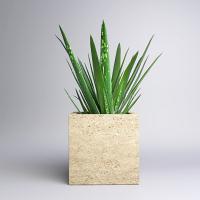How to Fix Yellow Tomato Plants
Yellow tomato plants can be a source of concern for any gardener. A yellowing plant can indicate a variety of problems, such as disease, nutrient deficiencies, or simply lack of water. However, there are steps you can take to get your yellow tomato plants back to health. Here are some tips on how to fix yellow tomato plants:
Diagnose the Problem First
Before you can fix the problem, you need to know what’s causing the yellowing. Take a close look at your plants and try to identify any potential issues. Some things to consider:
Are the leaves yellowing all over, or just on the lower part of the plant?
Are the veins on the leaves still green, or have they turned yellow too?
Is the yellowing accompanied by other symptoms, such as spots, wilting, or stunted growth?
Based on your observations, you’ll be able to narrow down the possible causes of the yellowing. Some common problems include:
Nitrogen deficiency
Iron deficiency
Root damage
Water stress
Insect infestation
Disease
Fixing Nitrogen Deficiency
Nitrogen deficiency is a common cause of yellowing leaves on tomato plants. To fix this problem, you’ll need to provide your plants with more nitrogen. You can do this by adding nitrogen-rich fertilizer to the soil, such as blood meal or fish emulsion. Alternatively, you can use a nitrogen-rich organic mulch, such as grass clippings or compost. Be careful not to over-fertilize, as this can lead to other problems.
Fixing Iron Deficiency
Iron deficiency can also cause yellowing leaves on tomato plants. This problem is more common in alkaline soils, where iron is less available to plants. To fix this problem, you can add iron to the soil using chelated iron supplements. You can also increase the acidity of the soil by adding sulfur or organic matter.
Fixing Root Damage
If your tomato plants have yellowing leaves near the base, it’s possible that the roots have been damaged. This can happen if the plants have been overwatered, underwatered, or if the soil is compacted. To fix this problem, you’ll need to improve the soil drainage and aerate the soil. You can also trim any damaged roots and add a layer of organic mulch around the base of the plant to protect the remaining roots.
Fixing Water Stress
Tomato plants need consistent moisture to thrive. If your plants are experiencing water stress, they may develop yellowing leaves, as well as other symptoms such as wilting and stunted growth. To fix this problem, you’ll need to make sure your plants are getting enough water. Water deeply and regularly, and make sure the soil stays consistently moist, but not waterlogged.
Fixing Insect Infestation
Insect infestations can cause a variety of problems for tomato plants, including yellowing leaves. Some common pests that attack tomato plants include aphids, spider mites, and whiteflies. To fix this problem, you’ll need to identify the pest and take appropriate measures to control it. This may include using insecticidal soap or neem oil, or introducing natural predators such as ladybugs or lacewings.
Fixing Disease
If your tomato plants have yellowing leaves accompanied by spots, wilting, or other symptoms, it’s possible that they have a disease. There are many different diseases that can affect tomato plants, including fungal infections, bacterial infections, and viral infections. To fix this problem, you’ll need to identify the disease and take appropriate measures to control it. This may include removing affected plant parts, using fungicide or bactericide, or using disease-resistant varieties.
Conclusion
Fixing yellow tomato plants can be a challenging task, as there are many different potential causes. However, by diagnosing the problem and taking appropriate measures, you can get your tomatoes back to health and enjoy a bountiful harvest. Remember to keep an eye on your plants throughout the growing season, and make adjustments as necessary to keep them happy and healthy!

 how many times do yo...
how many times do yo... how many planted tre...
how many planted tre... how many pine trees ...
how many pine trees ... how many pecan trees...
how many pecan trees... how many plants comp...
how many plants comp... how many plants can ...
how many plants can ... how many plants and ...
how many plants and ... how many pepper plan...
how many pepper plan...





























